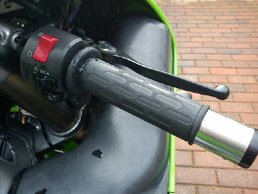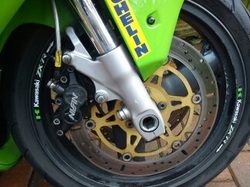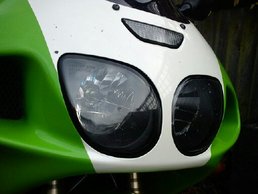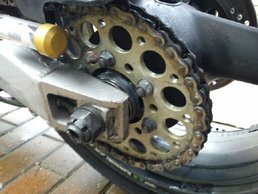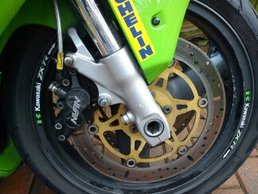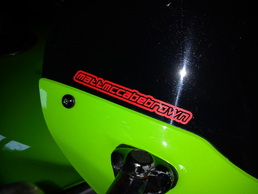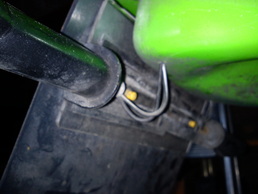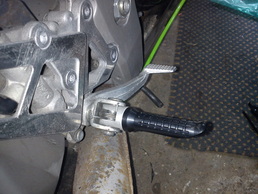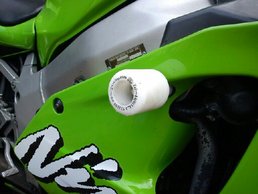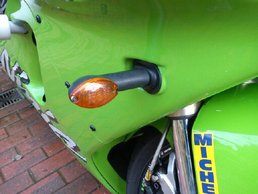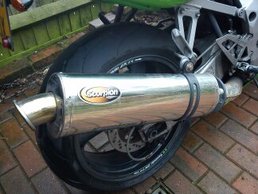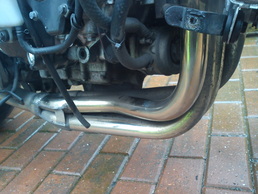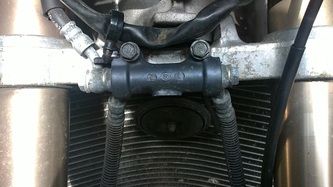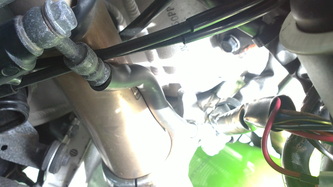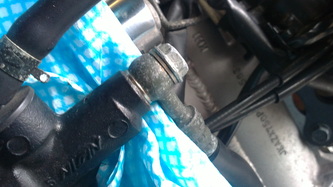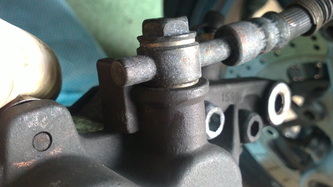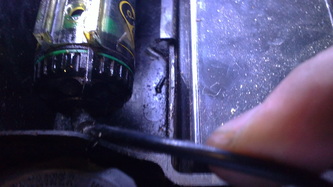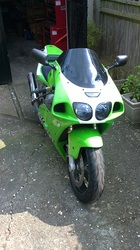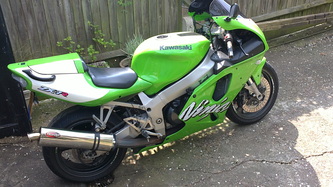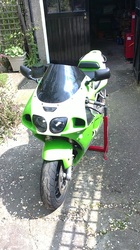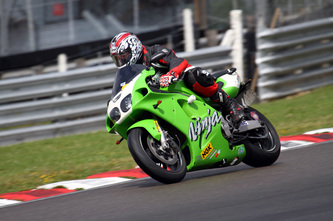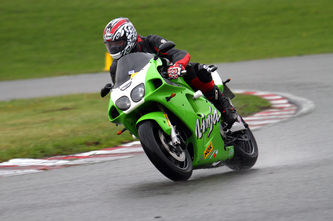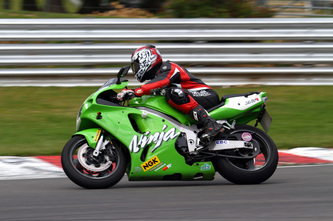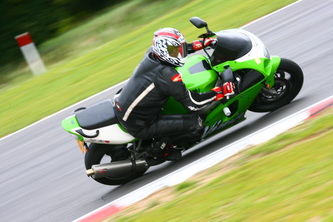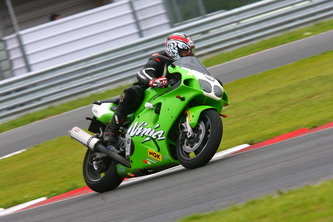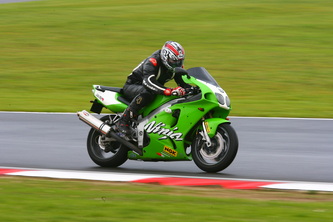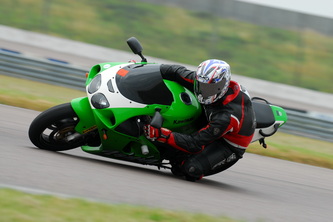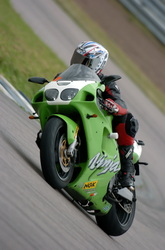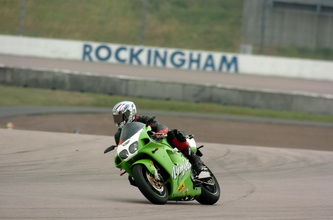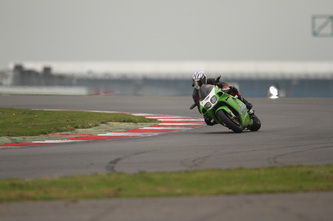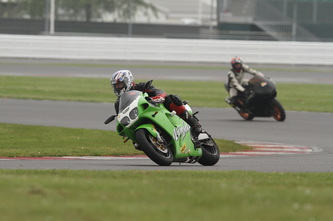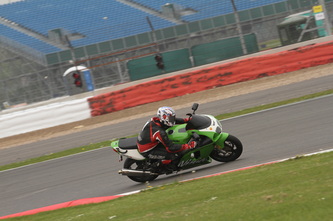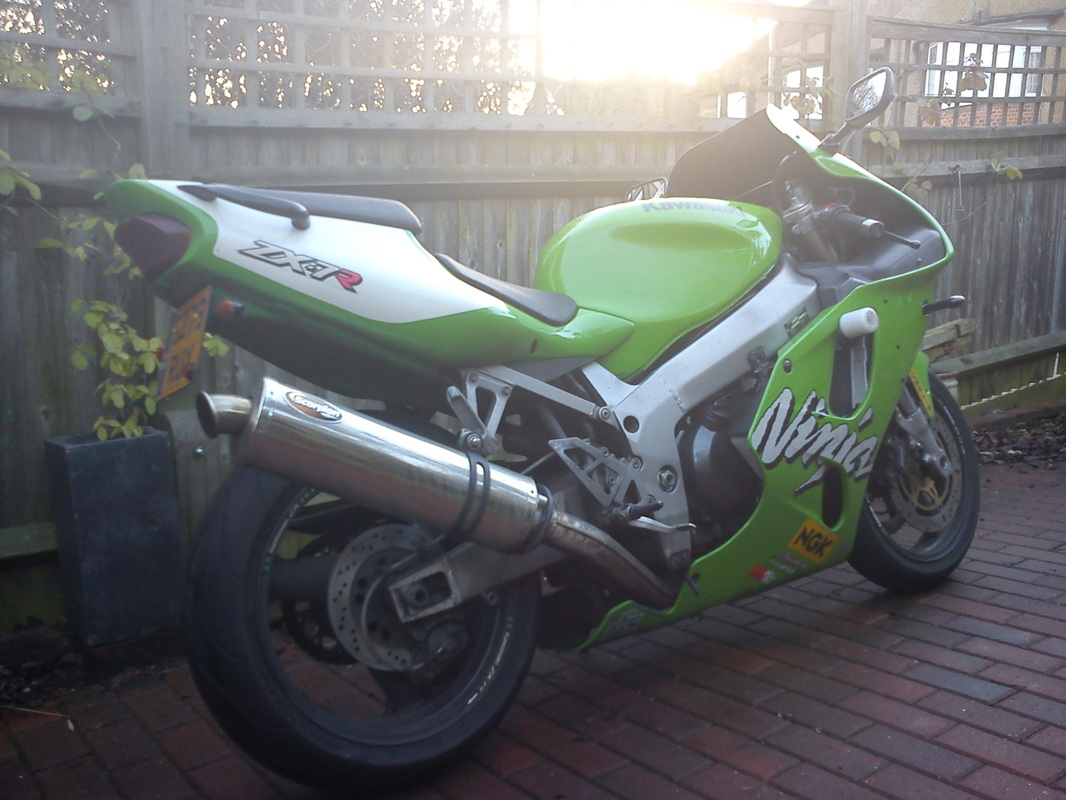Kawasaki Zx7R - April 2011 to JuLY 2013
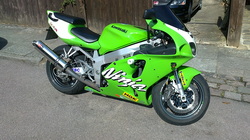
Evolving out of the Zxr750, in 1996 Kawasaki Heavy Industries released the Zx7r, a 750cc Inline Four sportsbike, which subsequently remained pretty much unchanged up until 2003 when Kawasaki dropped it from their model range. As of 2012, this was the last 750 sportsbike that they made, leaving Suzuki with the market all to itself.
Different to the Zx7RR, the homologated bike Kawasaki used for Superbike Racing which came with flat side carbs, a multi adjustable chassis, better suspension and a different gear box, the Zx7r was intended to be used on the road as well as the racetrack. Riders the world over have praised the chassis, especially the front end, which has a great reputation for feedback and stability. I have heard many a rider say that it is one of the best looking bikes Kawasaki even made.
Compared to modern bikes, the 7 is, well, how can I put this, a bit of an elephant. It’s a big heavy bike, admittedly not in the same league as a ZZR-1400, but if you compare it to a modern 1000cc bike, or even the GSXR 750 it was competing with during the ‘90s, she’s a big old bird. This isn’t necessarily a bad thing, as in the real world that extra size and bulk makes it that much easier to ride. For a sportsbike, it’s comfy and it’s roomy and that comes from a man who is 6’3. In all my years riding it, I have never had cramp. The only discomfort I feel is normally after an hour of so filtering out of London in heavy traffic, then the riding position starts taking its toll on my upper arms and if I’ve been riding for more than three hours, by knees stiffen up, but this is a Sportsbike, not a tourer.
The Zx7R was always a fairly basic bike, but it is powered by a 749cc, Double Overhead Cam (DOHC), four stoke, inline four engine which produces 57.9lb of torque at 9,300 RPM, with a claimed maximum BHP of 123, which will get the bike knocking on the door of 160 mph. If you’re brave/stupid enough to ride one that fast, you’ll be happy to know that the 320mm twin discs will be grabbed by six piston Tokico callipers. Keeping the wheels on the ground, the standard bike came with adjustable suspension front and rear.
Different to the Zx7RR, the homologated bike Kawasaki used for Superbike Racing which came with flat side carbs, a multi adjustable chassis, better suspension and a different gear box, the Zx7r was intended to be used on the road as well as the racetrack. Riders the world over have praised the chassis, especially the front end, which has a great reputation for feedback and stability. I have heard many a rider say that it is one of the best looking bikes Kawasaki even made.
Compared to modern bikes, the 7 is, well, how can I put this, a bit of an elephant. It’s a big heavy bike, admittedly not in the same league as a ZZR-1400, but if you compare it to a modern 1000cc bike, or even the GSXR 750 it was competing with during the ‘90s, she’s a big old bird. This isn’t necessarily a bad thing, as in the real world that extra size and bulk makes it that much easier to ride. For a sportsbike, it’s comfy and it’s roomy and that comes from a man who is 6’3. In all my years riding it, I have never had cramp. The only discomfort I feel is normally after an hour of so filtering out of London in heavy traffic, then the riding position starts taking its toll on my upper arms and if I’ve been riding for more than three hours, by knees stiffen up, but this is a Sportsbike, not a tourer.
The Zx7R was always a fairly basic bike, but it is powered by a 749cc, Double Overhead Cam (DOHC), four stoke, inline four engine which produces 57.9lb of torque at 9,300 RPM, with a claimed maximum BHP of 123, which will get the bike knocking on the door of 160 mph. If you’re brave/stupid enough to ride one that fast, you’ll be happy to know that the 320mm twin discs will be grabbed by six piston Tokico callipers. Keeping the wheels on the ground, the standard bike came with adjustable suspension front and rear.
Bike SpecsFrame Twin spar, aluminium
Rake angle 25 degrees Trail 99mm Wheelbase 1435mm Length 2090mm Height 1130mm Width 740mm Seat Height 790mm Weight (dry) 203kg Capacity 749cc Bore 73mm Stoke 44.7mm Comp Ratio 11.5:1 Tank size 18L (including reserve) |
Why A Zx7R?I was looking for a second bike, predominately to use on track and I didn’t want to, nor did I have £3k to do so. I was looking more at £1500 and made a short list which included an early R6, A GSXR 750, A Ducati 600SS and the Zx7R. After doing some ebay searches I found a Ninja one up for sale at £1500 down in Gravesend. I was watching it for a few days thinking I should offer him £1200, when it was bought up by somebody else. Knowing I’d missed out, I dropped the seller an email saying that if the sale fell through, to let me know, as I’d be interested. I got a call, two days later and was told the the sale had indeed fallen through and was asked if I was still interested. I was and we arranged a test ride for the following Saturday.
I drove down on a very sunny February afternoon, met the seller and took the bike out for the first time. I felt good, the engine pulled and didn't jump of our gear when under power, but the brakes seemed a bit spongy. I stopped at a local supermarket and gave the bike a good look over. There were so signs of abuse and it clearly hadn't been dropped and I knew I could sort the brakes. I was very interested and rode back to talk to the seller. It turns out he just wasn't using the bike which it was why it was up for sale. He had agreed on £1200 with the person who reneged and I was happy to match it so the deal was done. I had myself a Zx7r, in green naturally. |
mods and sods
The first job. The brakesWell what a day, and I do mean all day. I started taking the brakes apart at 10:40ish in the morning after taking the fairings off the day before. The plan was to replace all the brake lines with the Goodridge braided lines that I picked up and at the same time change the front pads for some HH EBC pads, whilst leaving the back caliper alone. I decided to enjoy myself and take it nice and slow, making sure not to rush anything to avoid any mistakes. I started by draining the front, which led me to take off the front callipers to change to pads, clean etc. I worked out the best way to route the new hoses through and attached all the banjos up. Despite my best efforts this is where my mistake came. I misread the information regarding the torque settings and managed to sheer, not one, but two banjo bolts in the left calliper. I got the first out, but the second just wouldn’t budge. I cursed myself for being so stupid, but took the offending calliper to my friends at North London Motorcycle training, who really are a great bunch of people. The mechanic got the remains of the banjo out in less the two minutes. You would be amazed at how happy that made me. Back home after a quick detour to pick up some new crush washers and I put it all back, making sure not to over tighten the banjos. Moment of truth. I added the new brake fluid to populate the system. This took ages, probably because my technique was shocking, but eventually the lever stopping coming back to the bar.
Now the rear. To get to the rear reservoir I had to take off the rear panels, which turned out to be a true walk through history. What I found was some serious bodging with the wires and the fitting of an undertray. I found a scotoiler, which I had no idea was there, two rags stuck in one of the gaps and some coins, a twenty pence piece and two pennies . It really looks like an idiot had attached the undertray. A bit of jiggery pokery later and the rear line was drained, changed and was back up and running. The lines do look great, I chose the ones with the clear coating. I put the rear body work and the front fairing back on and just as I was putting my tools away I noticed one of the horrid clear indicators on the front fairing was hanging off. Turns out, that the plastic the holding the lens to the backing plate (on the inside of the fairing) had snapped. It was too late to fix it and my next stop was searching the web for a solution, which turned out to be some new indicators. I just have to work out a way to stop the indicator banging around too much in the meantime. Masking tape is great stuff isn’t it. All in all it was a great learning experience and despite a few setbacks it was great fun and has given more a great feeling of accomplishment. |
Home: March 2010Brands hatch: july 2011Snetterton: Aug 2011Rockingham: Aug 2012silverstone gp: may 2013 |

